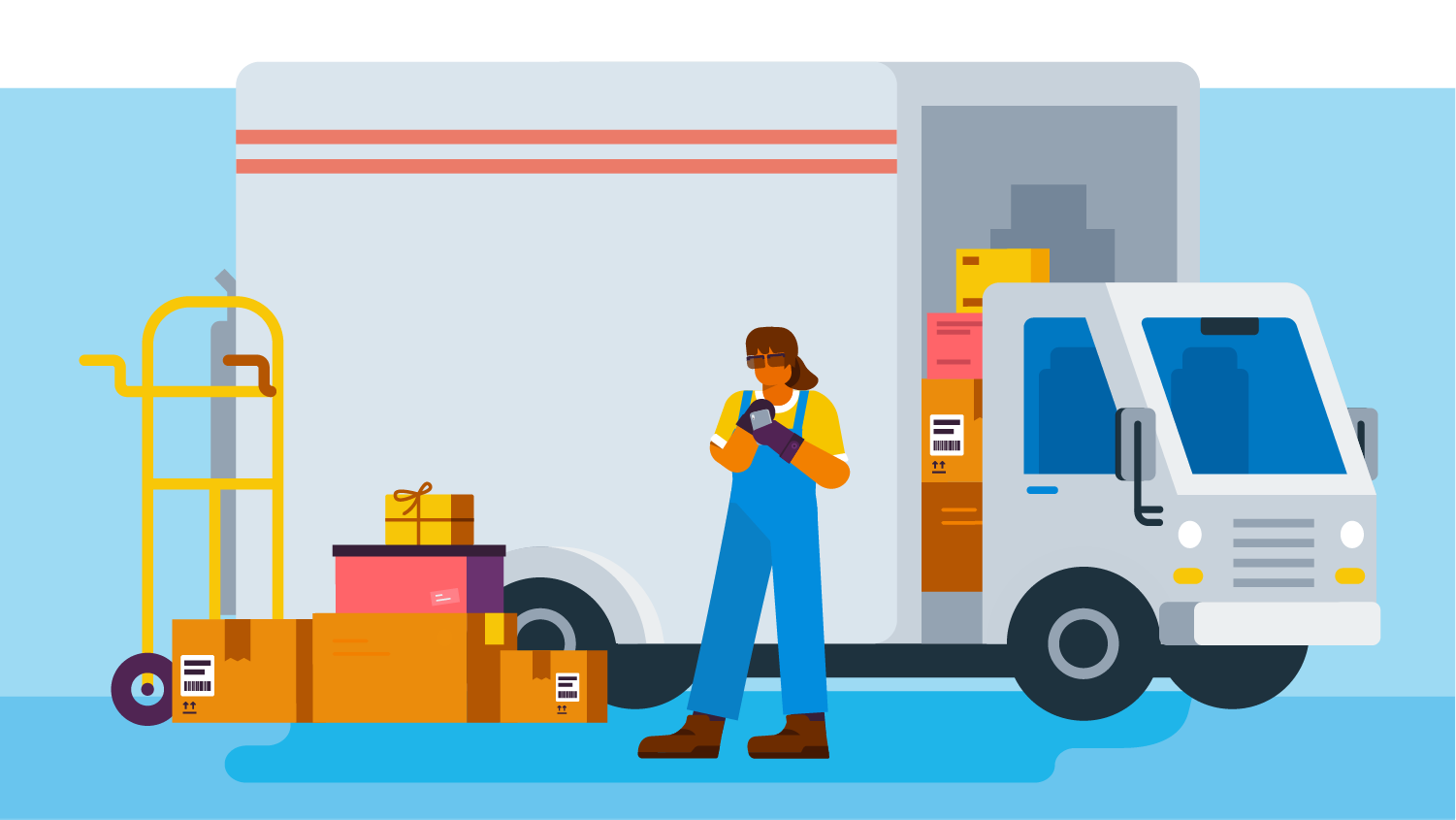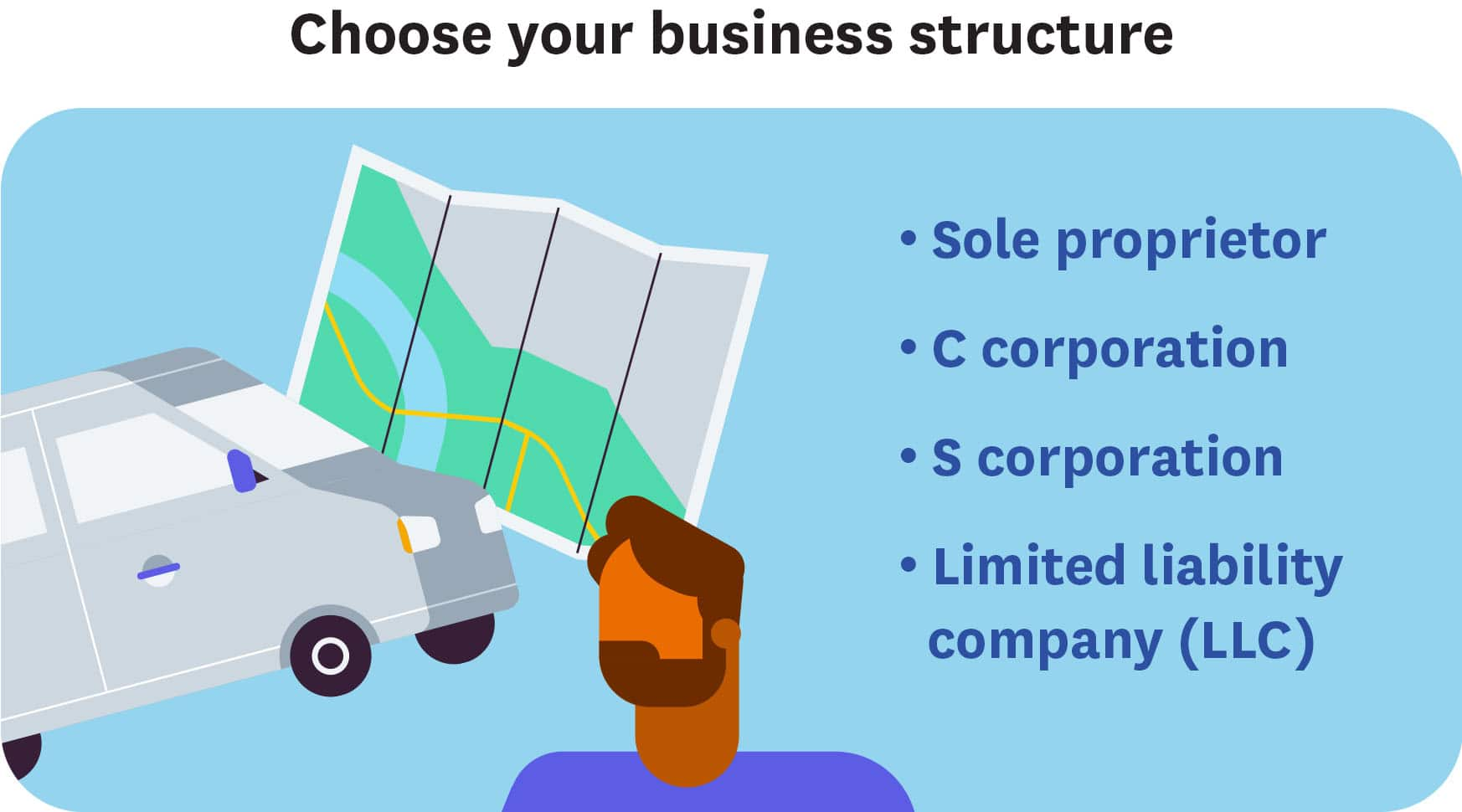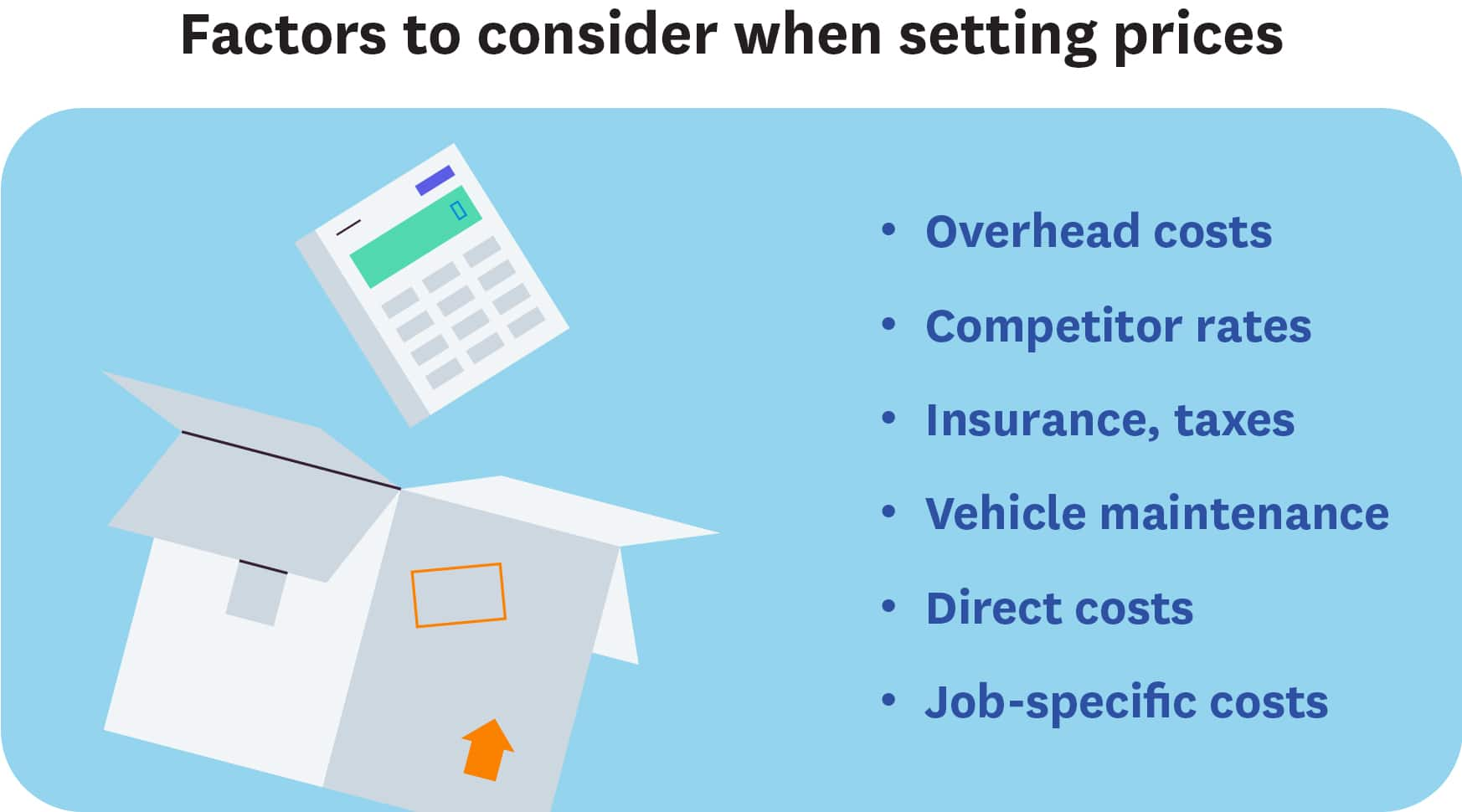Starting a moving company: 10 steps to launch and grow
Starting a moving company requires careful planning, proper licensing, and smart business strategies. Learn the essential steps to launch and grow your moving business successfully.

Written by Jotika Teli—Certified Public Accountant with 24 years of experience. Read Jotika's full bio
Published Friday 7 November 2025
Table of contents
Key takeaways
• Develop a comprehensive business plan that defines your specific moving company type (local, long-distance, commercial, or specialty) and identifies your unique selling proposition to differentiate from competitors in your target market.
• Register your business structure and obtain all required licenses including federal EIN, state permits, commercial driver's license if needed, and USDOT/MC numbers for interstate moves, which can cost $300-2,500 initially.
• Budget $50,000-$200,000 for startup costs including moving trucks ($15,000-$80,000), equipment and supplies ($2,000-$5,000), and ongoing expenses like commercial insurance ($3,000-$8,000 annually) and fuel costs.
• Implement a multi-channel marketing strategy that includes creating a professional website with SEO optimization, building a Google Business Profile for local searches, and establishing relationships with real estate agents and apartment complexes for referrals.
Why start a moving company?
Moving company ownership offers significant financial and lifestyle benefits, but requires careful planning and substantial investment.
Owning a moving company comes with several advantages:
- High demand: Americans move 11% of the time each year, creating consistent business opportunities
- Low barrier to entry: Start with a single truck or van
- Flexible operations: Choose local, long-distance, or specialty moving services
- Strong profit potential: Successful moving companies typically achieve 10-20% profit margins
To get started, you need to meet these requirements:
- Legal compliance: Business registration, permits, and commercial licenses
- Equipment investment: Trucks, moving supplies, and protective gear typically cost $50,000-$150,000
- Insurance coverage: Commercial auto, general liability, and cargo protection
- Ongoing expenses: Fuel, maintenance, employee wages, and marketing costs
10 steps for starting a successful moving business
Start with a clear vision for your moving company. Follow these 10 steps to launch your business:
1. Develop a business plan
A moving company business plan is a detailed document that outlines your strategy for launching and operating a profitable moving business. It serves as your roadmap for securing funding, understanding costs, and making strategic decisions.

Essential components include:
Executive summary: Your one-page overview covering business goals, target market, competitive advantages, and projected revenue. This section determines whether investors or lenders continue reading.
Company overview: Define your specific moving business model and service focus.
Moving company types:
- Local movers: Serve moves within 25-100 miles, require fewer permits, lower startup costs
- Long-distance movers: Handle interstate moves, need federal licensing, have higher revenue potential, and are subject to close federal scrutiny, with regulators creating lists to target for investigation.
- Commercial movers: Focus on business relocations, office equipment, higher-value contracts
- Specialty movers: Handle pianos, art, antiques, or other valuable items, premium pricing
Research the moving industry to find growth opportunities. Identify your target customers, how you will reach them, and how you will meet their needs.
Look at other moving companies that target the same customers. Decide how you will stand out. Highlight your unique selling point (USP) and make sure customers know what makes you different.
Next, set your business goals and outline how you will reach them. Plan how you will cover your startup costs.
2. Choose your business structure
Business structure selection determines how your moving company pays taxes, protects personal assets, and handles legal liability. Your choice affects everything from daily operations to long-term growth potential.
Structure options for moving companies:
- Sole proprietorship: You can start as a sole proprietor if you own the entire business. You do not need to form a separate legal entity. However, your personal assets may not be protected if someone sues your business. You can work under your own name or file for a 'doing business as' (DBA) name.
- C corporation: A corporate structure that creates the most separation between the owners (shareholders) and the business, and which can help both the business and shareholder protect their assets. If the owners work in the business they are employees, and the business files its own tax return and pays tax separately from the owners.
- S corporation: Similar to a C corporation, an S corporation is a distinct corporate entity and any shareholders who work in the business are employees. This separation is helpful for protecting the personal assets of the shareholders. However, the income is reported and taxed on the shareholder’s personal tax returns.
- Limited liability company (LLC): Forming an LLC may protect your personal assets from business lawsuits, while providing more flexibility than a corporation. If you choose this entity type, you’ll have options on how your business will be taxed; it could be any of the above, or taxed as a partnership depending on the number of owners and tax elections made.
3. Register for taxes
Tax registration establishes your moving company’s tax obligations with federal, state, and local authorities. Complete these steps before accepting your first customer.
Required registrations:
- Federal EIN: Apply free through the IRS.gov portal for tax filing and employee hiring, but note the online tool is only available Monday to Friday between 7 a.m. and 10 p.m. Eastern time.
- State sales tax: Register to collect tax on moving services (varies by state)
- Payroll taxes: Set up if hiring employees for Social Security, Medicare, unemployment
- Motor carrier taxes: May include fuel taxes and International Fuel Tax Agreement (IFTA) registration
- Local business taxes: Check city and county requirements for business operations

4. Apply for a business license
Once you have an employer identification number (EIN) and a legal entity, apply for a business license. Most states require you to register with state and local governments. Some states let you apply online. Make sure you register your company and get any permits required by state and federal law. You may need special permits if you move items across state lines.
You may need a commercial driver’s license (CDL) if you plan to drive moving trucks. This does not apply if you drive a moving van or hire other drivers for your vehicles.
5. Determine startup costs and equipment needed
Moving company startup costs typically range from $50,000 to $200,000 depending on your service scope and equipment choices. Understanding these expenses helps you secure adequate funding and set realistic pricing.
Essential equipment costs:
- Moving truck: $30,000-$80,000 new, $15,000-$40,000 used
- Moving supplies: $2,000-$5,000 for dollies, straps, blankets, boxes
- Safety equipment: $500-$1,500 for protective gear and tools
Ongoing operational expenses:
- Commercial insurance: $3,000-$8,000 annually
- Fuel and maintenance: $500-$2,000 monthly per vehicle
- Licensing and permits: $500-$2,500 initially
- Marketing: $500-$2,000 monthly for website, advertising
After you know your startup costs, choose how you will fund them. Common options include:
- personal savings
- credit card
- family and friends
- small business loan
6. Define your target market
Your unique selling point (USP) shapes your target market. To define it, ask yourself:
- what type of services you will offer
- which locations and types of customers (commercial or residential) you want to serve
- what sets your services apart from other moving companies with the same target market
Understanding your USP and target market is necessary for obtaining and keeping your customers. You need that information to market your brand effectively.
7. Set your prices
Check your competitors’ prices before setting your own. Make sure your pricing covers your costs and leaves room for profit. Start small and factor in all expenses, including wages, daily operating costs, insurance, taxes, fuel, and maintenance.
Once you know your costs and what competitors charge, set your prices. Moving companies often use these methods:
- charging a minimum fee, to ensure you still make a profit for smaller jobs
- charging by the hour or by the mile
- a combination of weight and mileage
8. Develop a marketing plan and build your brand
Brand building establishes your moving company’s identity and helps customers find and trust your services. A strong brand differentiates you from competitors and justifies premium pricing.
Brand development steps:
- Company name: Choose something memorable and check domain availability
- Professional logo: Invest in design that works on trucks, uniforms, and marketing materials
- Website creation: Include services, pricing, contact info, and customer testimonials
- Online reviews: Encourage satisfied customers to leave Google and Yelp reviews
- SEO strategy: Optimize for local searches like "movers near me" and "moving company [city]"
Social media helps you reach your target market. Use platforms like Facebook and Instagram to connect with Gen X and Millennials. TikTok is a good choice for Gen Z customers. Other ways to market your business include:
- word-of-mouth referrals
- business cards
- newspaper and/or radio ads
- local business directories
9. Open a business bank account
Open a business bank account to keep your company’s finances separate from your own. This makes tax filing easier and helps if you want a business credit card or loan later.
10. Get business insurance
You need business insurance to protect your company. Consider commercial auto insurance for your vehicles, cargo insurance, workers’ compensation, and general liability insurance.
Insurance requirements vary by state. Even if it’s not required, insurance gives you peace of mind. If you are unsure, talk to a lawyer.
Track your moving company finances with confidence
Starting a moving company involves many steps, from planning and licensing to marketing your services. When you keep your finances organized, your business runs smoothly. Xero helps you track startup costs, equipment purchases, payroll, and invoices.
Real-time cash flow insights help you make confident decisions and grow your business. Get started with one month free.
FAQs on starting a moving company
Here are common questions and answers small business owners might have when starting a moving company.
What is the average profit margin for a moving company?
Profit margins for moving companies usually range from 7% to 10%. You can increase your profits by optimizing routes, reducing fuel costs, and using accounting software to track expenses.
How much does a moving license cost?
Costs vary by state and the type of moves you do. A US Department of Transportation (USDOT) number is free. The motor carrier (MC) number for interstate moves costs about $300. Local and state permits can range from $50 to several hundred dollars. Check with your state’s Department of Transportation for exact requirements.
What’s the best way to get my first customers?
Tell friends, family, and your local community about your new business. Create a Google Business Profile to appear in local search results. Build relationships with real estate agents, apartment complexes, and storage facilities for referrals.
Disclaimer
Xero does not provide accounting, tax, business or legal advice. This guide has been provided for information purposes only. You should consult your own professional advisors for advice directly relating to your business or before taking action in relation to any of the content provided.
Get one month free
Sign up to any Xero plan, and we will give you the first month free.